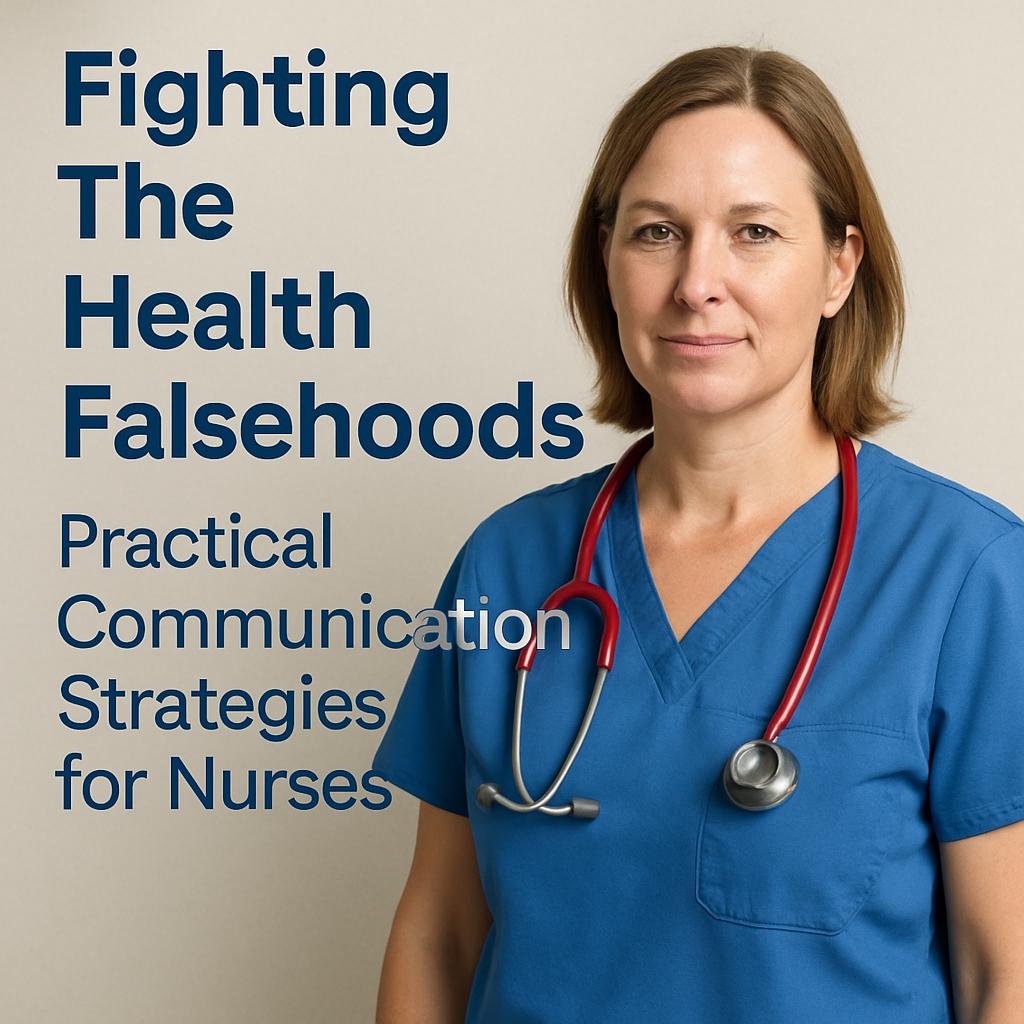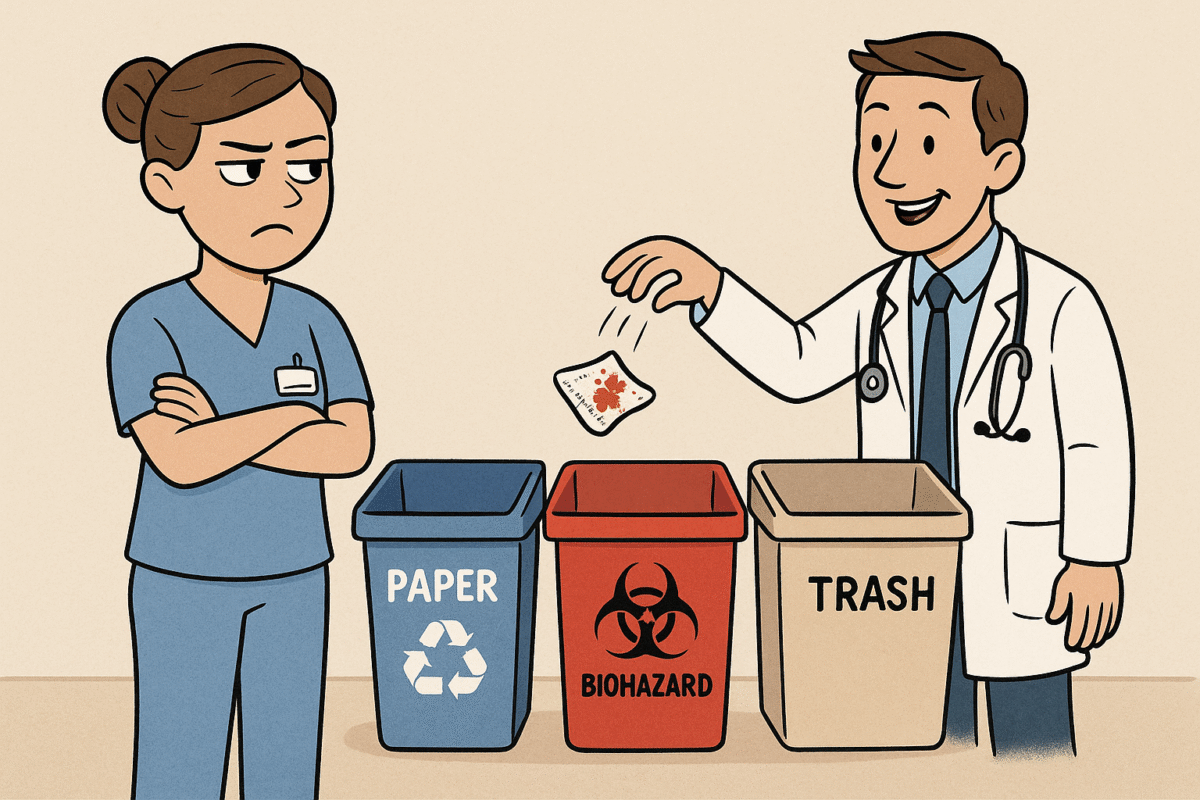Introduction: The Nurse’s Role in a World of Misinformation
Misinformation is not a new problem—but in today’s digital world, it spreads faster and farther than ever. From viral TikTok videos claiming miracle cures to Facebook posts warning against safe vaccines, false information reaches patients long before they sit down with their nurse or provider.
For nurses, this creates a unique challenge. We’re not just caregivers—we’re educators, advocates, and trusted professionals. Patients often look to us to confirm (or deny) what they’ve read or heard. But how do you correct misinformation without damaging trust, shaming someone, or escalating conflict?
This article will provide a comprehensive, evidence-based guide to correcting misinformation in both clinical and community settings. By the end, you’ll have practical tools, communication strategies, and confidence to approach even the toughest conversations.
🌟 Why Nurses Must Address Misinformation
1. Protecting Patient Safety
False beliefs can lead to life-threatening choices. For example:
- Skipping prescribed medication in favor of “natural” cures.
- Avoiding vaccines due to myths about infertility or microchips.
- Refusing necessary procedures because of misinformation online.
By correcting misinformation early, nurses can prevent poor health outcomes and reinforce safe practices.
2. Upholding Public Health
Misinformation doesn’t just affect individuals—it spreads across communities. Myths about vaccines, infectious disease, or chronic conditions can undermine entire public health campaigns. Nurses play a key role in counteracting false narratives with clear, accurate education.
3. Strengthening Professional Trust
Year after year, surveys show that nurses are the most trusted profession in the U.S. That trust is powerful—but it also carries responsibility. Patients rely on us not only for care, but for guidance in a confusing information landscape. Correcting misinformation helps us maintain that reputation of integrity and compassion.
🧠 Step 1: Listen First, Correct Second
The most common mistake healthcare providers make is jumping straight to correction. When we interrupt, dismiss, or bluntly say “That’s wrong,” patients may feel disrespected or shut down.
Instead:
- Pause and listen. Allow the patient to share their concern.
- Acknowledge the source. They may have heard it from a loved one or a trusted website.
- Show curiosity. Ask: “Where did you learn that?” or “Can you tell me more about what you’ve heard?”
👉 Why it works: Listening demonstrates respect, which builds a bridge for correction later. Patients are more likely to accept new information if they feel their concerns were heard first.
Example:
Patient: “I saw online that antibiotics completely destroy gut health forever.”
Nurse: “I’ve read about those concerns too. Can you tell me what you found most worrying?”
📚 Step 2: Use Clear, Simple Language
Medical jargon alienates patients. When correcting misinformation, simplicity is essential.
- Avoid technical terms. Replace “efficacy rate” with “protection.”
- Use analogies. “A vaccine is like a shield that protects most people from getting sick.”
- Break it down. Focus on one or two key points instead of overwhelming with data.
👉 Why it works: The simpler the explanation, the easier it is for patients to repeat later—to themselves, to their families, and even to social networks.
🧾 Step 3: Share Reliable Sources
A nurse’s word carries weight, but pairing education with evidence-based resources reinforces credibility.
Trusted sources to recommend:
- CDC (Centers for Disease Control and Prevention)
- WHO (World Health Organization)
- National Institutes of Health (NIH)
- Professional associations like the American Nurses Association (ANA)
Practical tip: Keep QR codes, handouts, or saved links on your phone. In the age of instant information, it’s powerful to say: “Here’s a reliable link you can read later.”
❤️ Step 4: Stay Compassionate, Not Confrontational
Correcting misinformation isn’t about winning an argument—it’s about preserving trust.
- Avoid shaming. Saying “That’s ridiculous” will only drive patients away.
- Acknowledge confusion. “There’s so much online—it’s hard to know what’s real.”
- Focus on shared goals. “I want to help you stay healthy and safe.”
👉 Why it works: Compassion disarms defensiveness. Patients are more receptive when they feel respected, not judged.
🧩 Step 5: Tailor Your Approach
Not all misinformation encounters are the same. Adjust your strategy depending on the setting:
- One-on-one with a patient: Quiet, private discussion.
- Family conversation: Address concerns gently while emphasizing how misinformation could affect their loved one’s care.
- Public forums or social media: Share links and resources publicly, but avoid heated debates that could backfire.
🚑 Real-World Scenarios Nurses Face
Scenario 1: Vaccine Myths
Patient: “I heard the flu vaccine can give me the flu.”
Nurse: “I understand why you’d think that. The flu vaccine uses inactivated virus, which means it cannot give you the flu. Some people feel achy for a day or two, but that’s your immune system building protection.”
Scenario 2: Alternative Treatments
Patient: “My neighbor says herbal teas can cure high blood pressure.”
Nurse: “Herbal teas can be calming, but they can’t lower blood pressure the way prescribed medications do. Untreated high blood pressure can damage the heart and kidneys. Let’s talk about safe ways to manage it.”
Scenario 3: Social Media Misinformation
Family member: “We saw a video saying hospitals inflate COVID numbers for money.”
Nurse: “I’ve heard that claim too. Hospitals actually face strict reporting requirements. What we see is that accurate data helps us get resources—like ventilators and staffing—to care for patients.”
🌍 Nurses as Public Health Advocates
Correcting misinformation doesn’t stop at the bedside. Nurses also play a role in the community:
- School health presentations: Teaching students about vaccines, nutrition, and healthy choices.
- Community outreach events: Answering questions in a safe, supportive space.
- Social media presence: Sharing accurate content, participating in awareness campaigns, and amplifying evidence-based voices.
By speaking up beyond clinical walls, nurses extend their impact to broader public health.
🔑 Advanced Communication Strategies
For especially difficult conversations, consider these evidence-based tools:
- Motivational Interviewing (MI):
- Ask open-ended questions.
- Use affirmations (“I can tell you care deeply about your health.”).
- Provide information with permission: “Would you like me to share what I know?”
- The “Truth Sandwich” Technique:
- Start with the fact.
- Address the myth.
- End with the fact again.
Example: “COVID vaccines are safe and effective. Some people online claim they alter DNA, but that’s false. The truth is vaccines train your immune system without changing your genes.”
- Storytelling:
Patients relate to personal experiences. Share anonymized patient stories when possible:- “I cared for someone who delayed treatment because of what they read online. They became very sick. That’s why it’s so important to act early.”
🧘 Taking Care of Yourself as a Nurse
Correcting misinformation repeatedly can be emotionally draining. Nurses often face skepticism, hostility, or even confrontation. Protect your own well-being by:
- Debriefing with colleagues.
- Using humor appropriately (nurse forums and communities can provide relief).
- Taking breaks from social media to avoid misinformation overload.
Remember: You can’t correct every myth, but you can make a difference one conversation at a time.
✨ Final Thoughts
Misinformation is everywhere—but so are nurses. With trust, compassion, and evidence on our side, we are uniquely positioned to correct falsehoods and guide patients toward safe, informed decisions.
Correcting misinformation doesn’t mean proving someone wrong. It means building understanding, protecting health, and strengthening trust in healthcare. Every respectful conversation is a step toward healthier patients, families, and communities.




